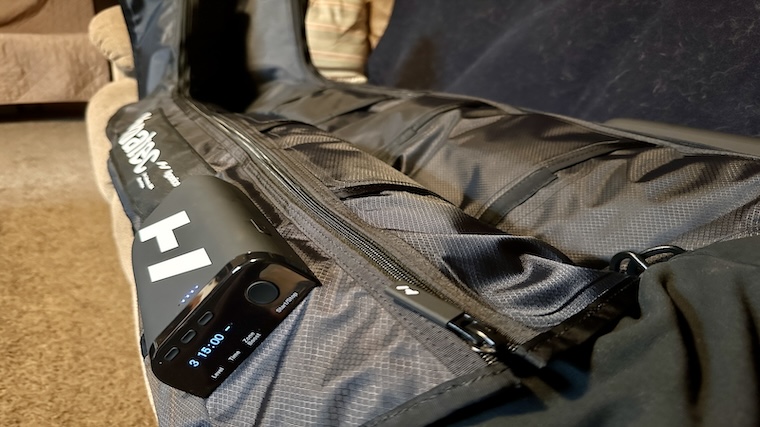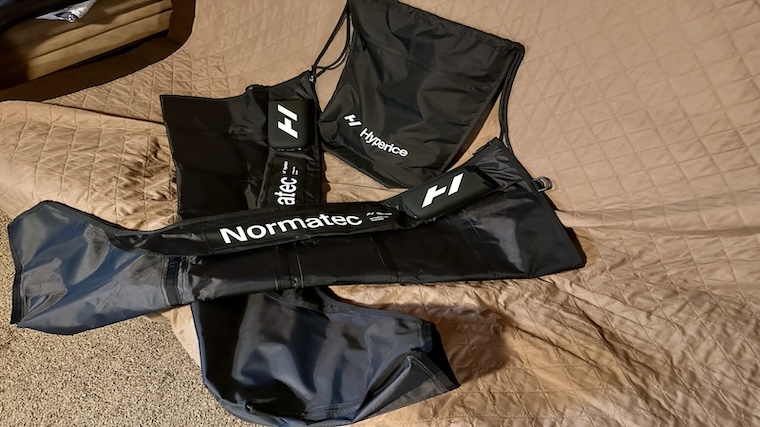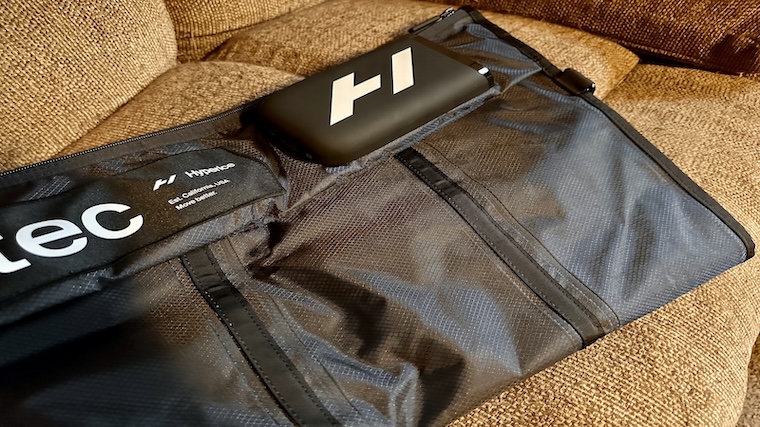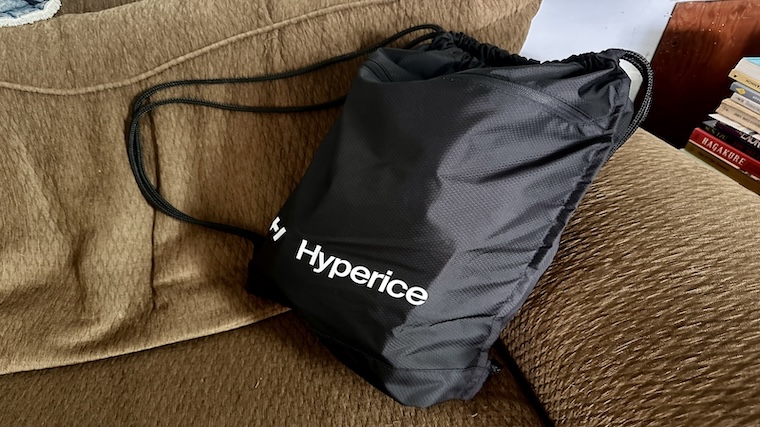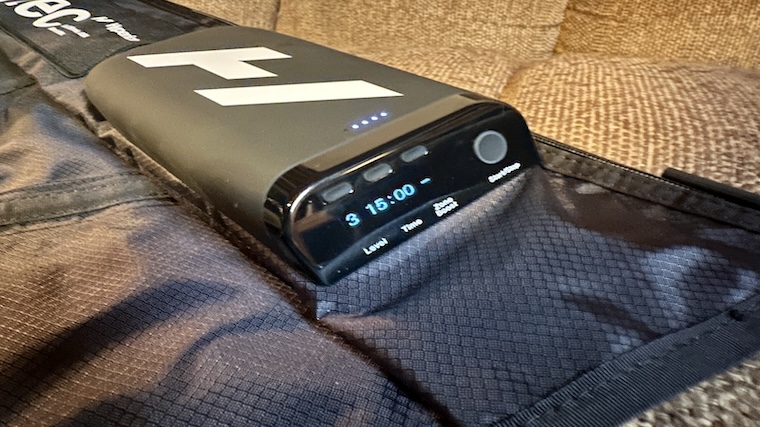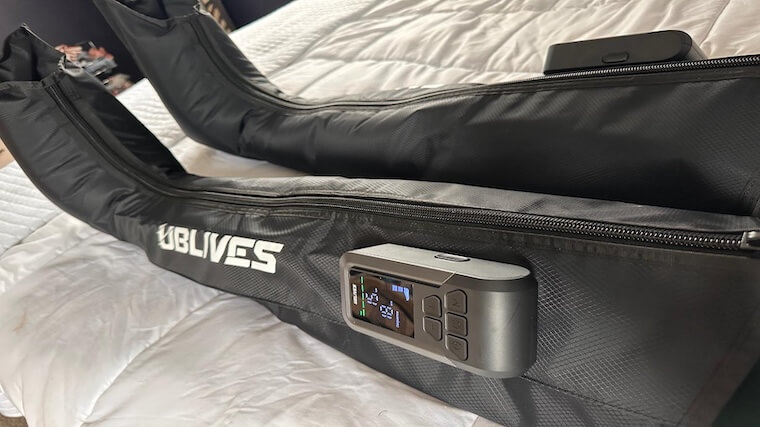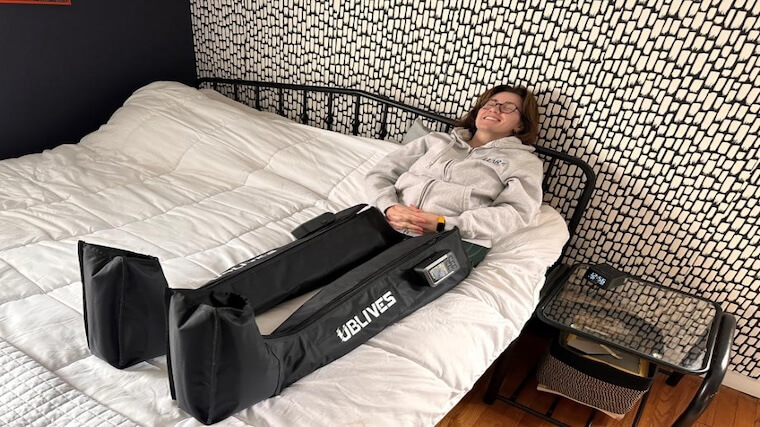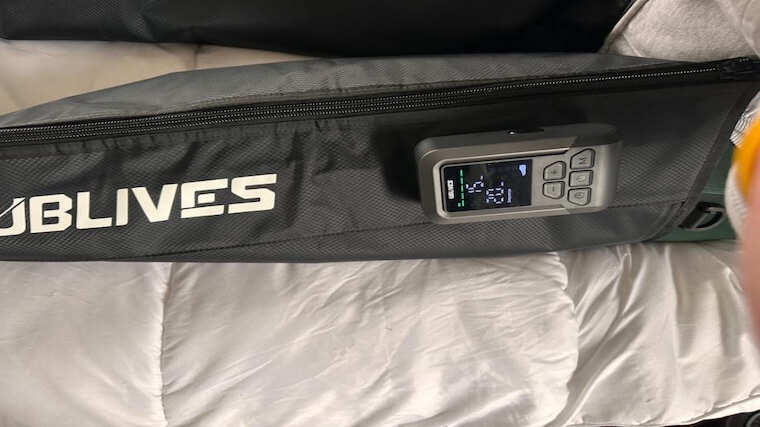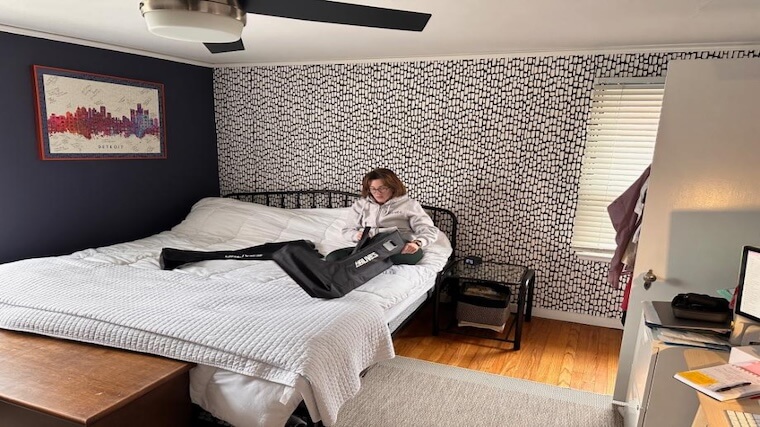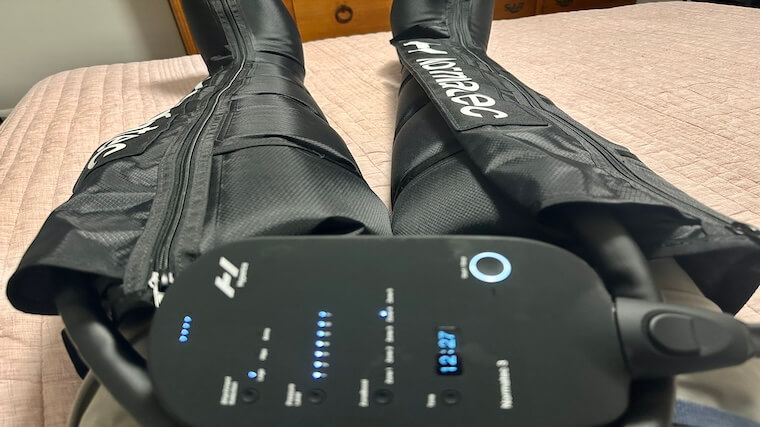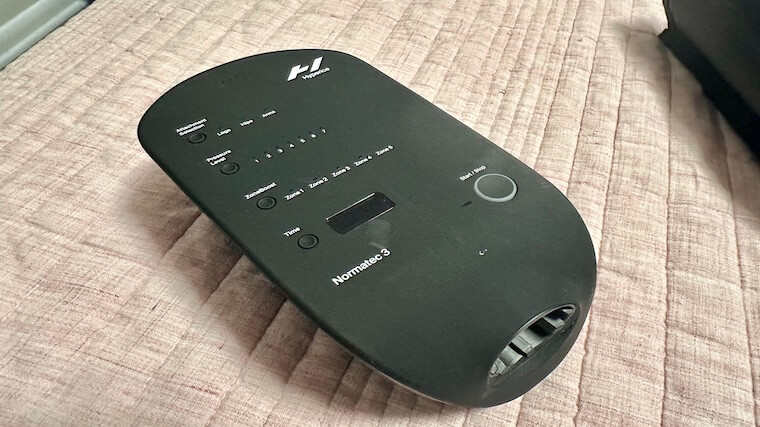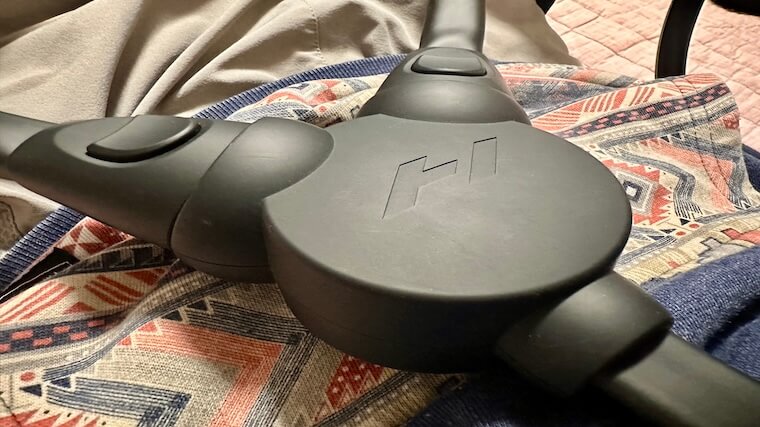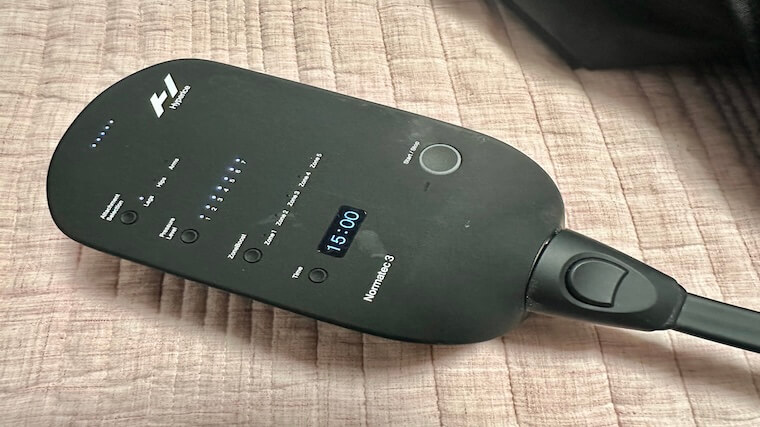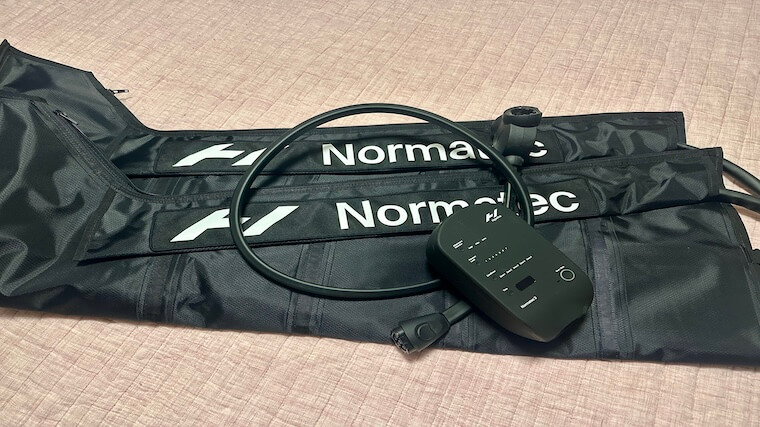As certified personal trainer Kate Meier points out, “Recovery tools can be incredibly subjective.” While your training partner or colleagues may be raving about the best massage guns, this post-workout modality may be too invasive or irritating for your personal needs. The best compression boots may offer a convenient solution, utilizing pneumatic compression across your lower limbs to help alleviate muscle soreness through improved blood flow and muscle stimulation. (1)(2)
These helpful recovery devices, though, aren’t the cheapest post-workout accessories on the market, so understanding what to look for prior to purchase is a must. To help you soothe away that nagging muscle fatigue, we’ve tested over a dozen different compression boot products and had our team of fitness experts rate each silhouette based on our equipment testing methodology. Scores were tallied in categories such as:
- Adjustability: Do the boots feature multiple compression levels to support different recovery intensities?
- Portability: Can these recovery tools be toted around easily, or are they best reserved for at-home use?
- Ease of Use: How bulky is the setup? Are there added features like Bluetooth controls or on-boot pumps?
- Value: Are you getting your money’s worth when comparing the recovery effectiveness to the listed price tag?
The BarBend team has helped over 300,000 athletes connect with high-quality recovery gear to support their workout performance and growth. If you’re interested in adding a pair of compression boots to your arsenal, we’re confident that the following details can help you put your best foot forward in your upcoming muscle recovery sessions.
The 7 Best Compression Boots of 2025
- Best Compression Boots Overall: Hyperice Normatec Elite
- Best Budget Compression Boots: ReAthlete Air-C Full Leg Compression Massager
- Best Wireless Compression Boots: Therabody JetBoots Prime
- Best Portable Compression Boots: Hyperice Normatec Go
- Best Compression Boots for Beginners: Ublives SoleFlex Relax Air Compression Boots
- Best Compression Boots for Athletes: Therabody JetBoots PRO Plus
- Best Full-Body Compression Recovery System: Hyperice Normatec 3 — Full Body
Best Compression Boots Overall: Hyperice Normatec Elite
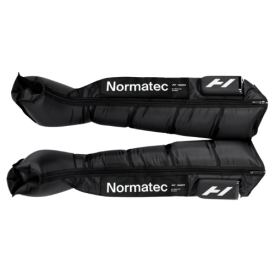
The Normatec Elite Recovery Boots feature on-boot control modules that allow you to select your session’s timing and intensity, eliminating the need for lengthy hoses or external control units. Plus, these recovery boots can be synced with the Hyperice app for more convenient control throughout your post-workout regimens.
Specs
- Price: $999
- Product Weight: 3.2lbs (single boot)
- Compression Levels: 7
- Battery Life: Up to 4 hours
- Pump Location: On-boot
- Available Sizes: Short, Standard, Tall
Best Budget Compression Boots: ReAthlete Air-C Full Leg Compression Massager
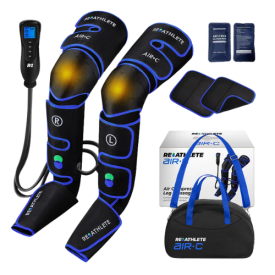
The ReAthlete Air-C Full Leg Compression Massager is a budget-friendly pair of compression boots boasting three available pressure settings and included extension pads for more accommodating sizing. Plus, the carrying bag makes storing your recovery tools or taking them with you on the go a far more achievable feat that what you’d experience with bulkier, heavier setups.
Specs
- Price: $399.99
- Product Weight: 3.7lbs
- Compression Levels: 3
- Battery Life: No built-in battery
- Pump Location: External
- Available Sizes: One Size Fits Most
Best Wireless Compression Boots: Therabody JetBoots Prime
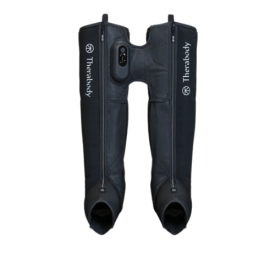
The all-new JetBoots Prime from Therabody feature a singular built-in pump system that eliminates the need for bulky hoses and heavy external head units for effective compression therapy. You can even purchase these recovery boots with your available HSA or FSA funds, making them a convenient way to utilize your healthcare benefits for improved post-workout recuperation.
Specs
- Price: $499
- Product Weight: 5.5-6.3lbs (depending on size)
- Compression Levels: 4
- Battery Life: 180 minutes
- Pump Location: On-boot
- Available Sizes: Short, Regular, Long
Best Portable Compression Boots: Hyperice Normatec Go
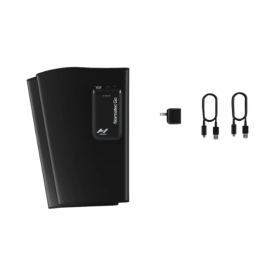
Resembling a calf sleeve more so than a full-blown compression boot, the Normatec Go silhouette from Hyperice is one of the most portable examples of pneumatic compression therapy. Each sleeve features a built-in pump for independent or synced operation, and the time duration and allotted pressure can be controlled via Bluetooth and the compatible Hyperice app.
Specs
- Price: $399
- Product Weight: 1.2lbs
- Compression Levels: 7
- Battery Life: Up to 3 hours
- Pump Location: On-boot
- Available Sizes: One Size Fits Most
Best Compression Boots for Beginners: Ublives SoleFlex Relax Air Compression Boots
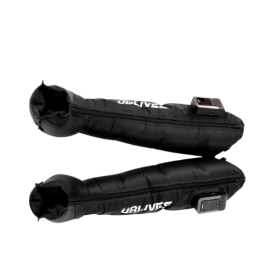
Looking to dip your toes into the compression boot category? Often available at a discounted price, these SoleFlex Relax compression boots from Ublives feature on-boot pump controls along with accommodating One Size Fits Most dimensions and an impressive battery life that can hold charges up to 300 minutes.
Specs
- Price: $988
- Product Weight: 6.17lbs
- Compression Levels: 5
- Battery Life: Up to 300 minutes
- Pump Location: On-boot
- Available Sizes: One Size Fits Most
Best Compression Boots for Athletes: Therabody JetBoots PRO Plus
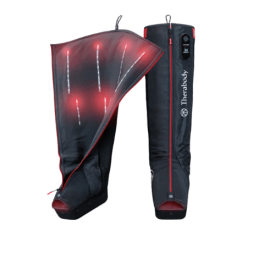
The Therabody JetBoots PRO Plus compression boots combine pneumatic compression therapy with vibration therapy and red light therapy modalities, all in a single leg-shaped recovery tool. There are also eight preset recovery routines to choose from, perfect for simply unwinding and letting your fitness equipment soothe away your post-workout sores and aches.
Specs
- Price: $999
- Product Weight: 11.3-12.8lbs (depending on size)
- Compression Levels: 4
- Battery Life: 150 minutes
- Pump Location: On-boot
- Available Sizes: Short, Regular, Long
Best Full-Body Compression Recovery System: Hyperice Normatec 3 — Full Body
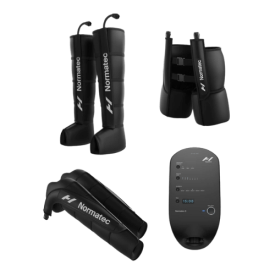
Hyperice’s Normatec 3 Full Body bundle includes leg, arm, and hip attachments that are compatible with the powerful Normatec 3 head unit. Each attachment silhouette is also loaded with preset recovery routines, available through the Hyperice app, for simplified treatment post-training.
Specs
- Price: $1,449
- Product Weight: 3.2lbs (control unit)
- Compression Levels: 7
- Battery Life: Up to 3 hours
- Pump Location: External
- Available Sizes: Short, Standard, Tall (legs) | One Size Fits Most (arms) | One Size Fits Most (hips)
How We Tested and Chose the Best Compression Boots
The BarBend team is made up of competitive athletes, certified personal trainers, nutrition coaches, and lifelong fitness enthusiasts. To compile this round-up of the best compression boots available today, we got hands-on with 14 different products from some of the category’s most well-known brands. Using our equipment testing methodology for protocol, we then rated each pick in the following categories on a scale of 1 (lowest) to 5 (highest).
- Compression Levels: Delayed onset muscle soreness can come in different intensities, so it’s helpful to have compression boots that offer multiple pressure settings to soothe any aches and pains. When crafting this guide, we prioritized compression boots with at least three different compression settings.
- Ease of Use: Compression therapy, while straightforward in theory, can be complicated in practice. As such, we made sure to include picks that offered understandable functions and settings that beginner and veteran athletes could quickly grasp. We also highlighted a mix of simplified profiles as well as some that offered more detailed routines in an effort to cater to more wants and needs.
- Portability: Every athlete’s schedule is different — some may be fine with larger equipment best kept at home while others need handy tools that can be easily carried around during trips. We made sure to note which compression boots could be used for travel as well as which silhouettes may be better suited for at-home use only.
- Other Features: The compression boot landscape has shifted since its inception with multiple products offering extra features like wireless controls, Bluetooth compatibility, and other recovery modalities like vibration or red light therapy. We’ve included bare bones and more luxe picks, alike, in this round-up, calling out which features were favored amongst our testers and which weren’t as worthwhile during trials.
- Price: OK, compression boots can be expensive, but that doesn’t mean their benefits are completely hidden behind a paywall. We made sure to note the MSRP of each chosen compression boot setup along with which silhouettes resembled more of the best budget home gym equipment in terms of value and overall cost.
What is Compression Therapy?
In definition, compression therapy is the implementation of pressure — typically in the form of pneumatic, i.e., air or gas — to specific muscle areas for the sake of improving blood flow and reducing swelling. (7) Compression therapy devices can be designed for any part of the body, but a majority of at-home profiles target the legs.
The air is passed into a specific chamber of an attached sleeve, creating a squeezing sensation across the area for an allotted amount of time. Then, the chamber deflates and allows for the circulation to do its magic.
Benefits of Compression Boots
Like the best foam rollers, massage guns, and red e-stim machines, compression boots can be an effective way to alleviate post-workout soreness thanks to their effects on blood flow and getting vital nutrients into your musculature for proper recovery. (1)(2) Of course, though, there are other perks associated with this modality. Below are some of our favorites that can come from adding these soothing kicks to your post-training repertoire.
- Improved Blood Circulation: According to Kate Meier, BarBend editorial team member and certified personal trainer, “A compression boot is designed to simulate muscle contractions. When your muscles contract and relax, blood flow to the area increases, delivering a number of benefits that include delivering nutrients and oxygen to your muscles.” Stimulating circulation via pneumatic compression therapy can help you increase delivery of these vital compounds for improved post-workout recovery.
- Faster Muscle Recovery: The increased blood flow can also help potentially soothe away pesky aches along your muscles. This sequential inflation and deflation across each air chamber sort of acts like a deep tissue massage, so while it may not erase muscle soreness completely, it can be a comfortable way to minimize noticeable pain.
- Pre-Workout Activation: While they’re pronounced as a post-workout recovery tool, compression can also be just as beneficial prior to training. Meier notes, “While I wouldn’t recommend replacing your typical warm-up routine solely with compression boots, the circulation benefits can be a quick, effective way to activate muscles before getting into a session.”
- Convenient Pain Relief and Relaxation: When you use compression boots, you essentially let the machine do the work for you. Rather than painting across your muscles with a massage gun or rolling over a dense tube of foam, you simply sit back and relax while the pressure changes help direct increased blood flow through your lower extremities. This hands-off approach to post-workout recovery could be appealing to athletes, particularly those that may feel intimidated about covering all required areas with other apparatuses.
Negatives of Compression Boots
While compression boots can be a beacon of recovery for many athletes, there are some negatives to be aware of. Below are a handful of cons we recommend thinking through before deciding on a pair of recovery boots for yourself.
- Skin Irritation: When wearing compression boots, you’re essentially placing a large sock overtop your entire leg and keeping it there for your entire session. These leg attachments can be humid, at times, leading to pooled sweat that may irritate your skin. Additionally, the enhanced blood flow may lead to some itching that may be uncomfortable to some.
- Discomfort: As the air chambers fill and deflate, the increased pressure could feel uncomfortable, especially when the experience is over a particularly achy area. We recommend paying close attention to your body and limiting or avoiding compression therapy over sensitive areas.
- Cost: Compression boots are oftentimes expensive, which may be less inviting for athletes on a budget. This is due to the implemented technologies required from the discipline. If you can afford a pair of compression boots, great! Remember, though, that no recovery modality is worth overspending for — there are plenty of disciplines to keep you well-rested and performing without breaking the bank.
How Do Compression Boots Work?
Compression boots use pneumatic compression to provide post-workout relief to tired leg muscles. Each leg attachment features multiple air chambers that fill and deflate in a prescribed sequence. This inflation and deflation simulates muscle contractions, which can increase blood circulation and deliver much-needed nutrients to your muscle fibers for optimal recovery. (1)(2)
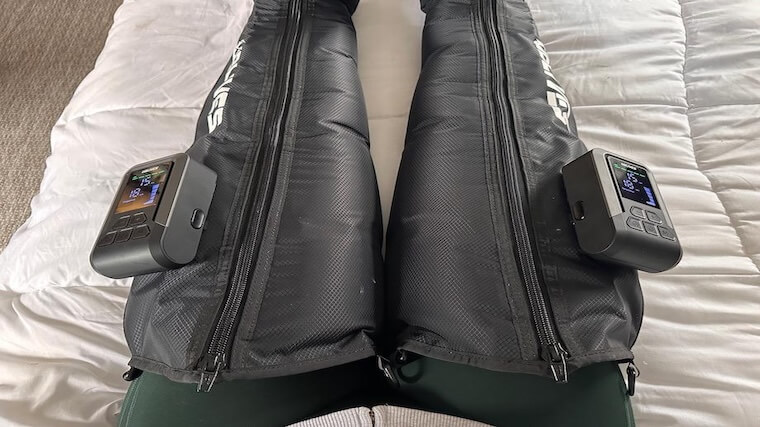
The pressure provided can be toggled to your preferred intensity, giving you room to adjust how much of a squeeze you feel across targeted areas. Typically, sessions can last upwards of 30 minutes, but you can always shorten your routine if you’re crunched for time. Control-wise, you can expect to find either external head units that connect to the boots via hoses and wires, or on-boot pumps. Some compression boots are Bluetooth-compatible, too, which can be great for toggling your pressure and time while scrolling your social media feeds or updating your best workout apps with your completed training metrics.
How Much Do Compression Boots Cost?
On average, you can expect to pay roughly $820 for compression recovery boots with natural outliers on either end of this median cost. Below, we’ve gathered the prices of each compression boot featured in this guide. Take a gander at the chart and see which silhouette fits your interests (and budget) best.
| Best Compression Boots Overall | Hyperice Normatec Elite | $999 |
| Best Budget Compression Boots | ReAthlete Air-C Full Leg Compression Massager | $399.99 |
| Best Wireless Compression Boots | Therabody JetBoots Prime | $499 |
| Best Portable Compression Boots | Hyperice Normatec Go | $399 |
| Best Compression Boots for Beginners | Ublives SoleFlex Relax Air Compression Boots | $988 |
| Best Compression Boots for Athletes | Therabody JetBoots PRO Plus | $999 |
| Best Full-Body Compression Recovery System | Hyperice Normatec 3 — Full Body | $1,449 |
What to Consider Before Buying Compression Boots
Like any major fitness purchase — from the best squat racks to treadmills, home saunas, and more — there are a handful of considerations to ponder over before finalizing your shopping cart with a brand-new pair of compression boots.
Pressure Levels and Adjustability
One of the major factors we recommend thinking through when purchasing compression boots is the available compression levels offered through the head unit, i.e., how many pressure settings are available for different recovery intensities. “Some boots are pretty straightforward with just a few available levels, whereas others may offer different programs or even vary intensities based on targeted muscle groups,” states Kate Meier, BarBend editorial team member and certified personal trainer. “If simplicity matters to you, find boots that are basically plug-and-play. if you’re more particular with what you’re trying to accomplish, then boots with optionality will be key.”
Portability
Interested in keeping your compression boots handy while you travel? Perhaps you just want a sleek, compact pair of boots for easier storage. Regardless of your reasons, compression boots can come in varying profiles and weights. Typically, silhouettes with built-in pumps are more lightweight and packable, with some even carrying TSA approval as carry-on luggage. Larger compression boots with heavy external head units may be less portable but still offer the same recovery benefits. Think about your post-workout habits and whether a portable pair of recovery boots is right for your needs.
Size
Like shopping for the best running shoes, you should also be mindful of your compression boot size. While it can be common to find One Size Fits Most designs, some profiles are available in shorter or longer dimensions. Be sure to read any available size charts and match your personal dimensions to your boots of choice.
Targeted Areas
As the name suggests, compression boots are primarily going to target your leg muscles with a majority of profiles featuring air chambers that target your feet, calves, knees, and thighs. There are some silhouettes, though, that only cover the calves or below-the-knee muscle groups in an effort to minimize heft and improve portability. Take a look at the design and make sure that your preferred muscles can receive effective treatment.
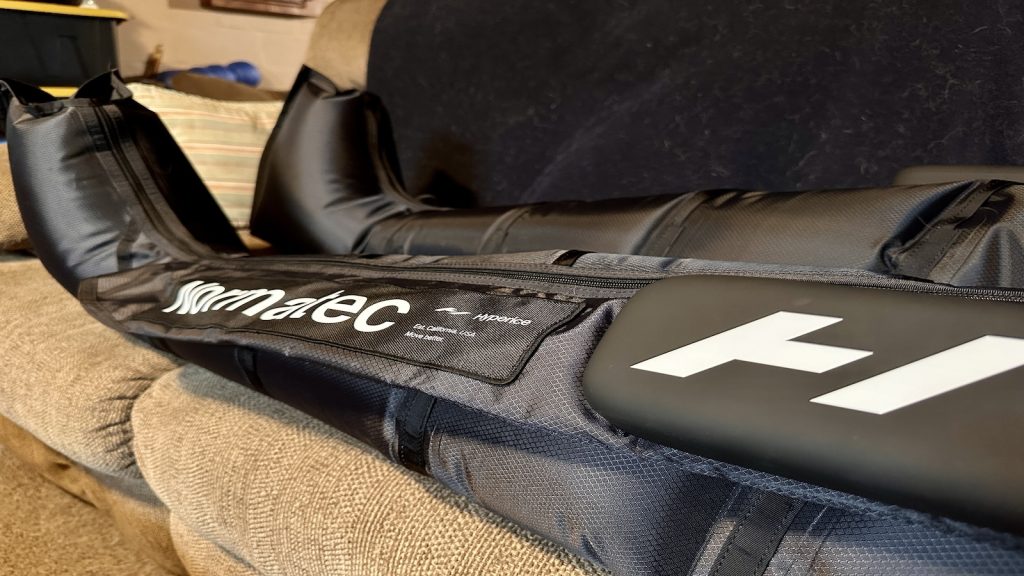
In addition, some compression boot systems, like the Hyperice Normatec 3, offer different attachments that can provide recovery for areas like the arms and hips. While these are typically accessory purchases, it could be a worthwhile way to practice full-body recovery.
Ease of Use
“Ease of use” can be interpreted multiple ways. For us, it indicates how simple the settings are across the unit as well as how involved the setup is prior to a session. Some compression boots require multiple attachments and hoses that can be tricky to maneuver and set beforehand, while others have everything conveniently built into each individual leg attachment. Settings-wise, we recommend looking for compression boots with well-labeled consoles with clear readouts for available adjustments like time of session and pressure rating.
It can also be helpful to seek compression boots with Bluetooth compatibility. This can allow you to pair your smartphone to your boots for remote toggling. If anything, it eliminates the need to bend over toward the head unit for intra-recovery changes.
Price
Compression boots are an investment with some price tags floating near or above $1,000. Naturally, then it’s important to think through your budget and see if pneumatic compression therapy is right for your fitness needs.
Remember, too, that these aren’t the lone recovery tools you can use to promote muscle growth and comfort. “I personally love using compression boots, but there are much more affordable alternatives that could accomplish similar outcomes,” says Meier. “Foam rolling, voodoo flossing, and even old-fashioned active stretches are significantly more budget-friendly.”
Compression Boots FAQs
What are the best compression boots?
Determining the best compression boots can be subjective from one athlete to the next. In our opinion, though, the best compression boots available today are the Normatec Elites from Hyperice thanks to their built-in pumps, lightweight design, and tech-driven features like HyperSync for dual-leg treatments and ZoneBoost for targeted muscle relief.
Are compression boots worth it?
Compression boots can be worthwhile given their hands-off approach to post-workout recovery and effective influence on blood circulation and muscle relief. (1)(2) However, these recovery tools are often expensive and, given the name, only focus on your legs, so there isn’t much relief for upper body appendages. Think through your training style and desired recovery routine to see if compression boots are right for you.
Who should not use compression boots?
Medical professionals suggest that athletes with circulation issues or pre-existing nerve conditions should be cautious about using pneumatic compression boots for post-workout recovery. (6) Kate Meier, certified personal trainer, adds, “Compression boots can also potentially lead to irritation for those with sensitive skin.” If you are hesitant or have questions about your readiness to begin compression therapy with these recovery tools, it’s always advised to speak to your personal healthcare professional.
What are the differences between compression boots and massage boots?
The differences between compression and massage boots lies in the names themselves. Compression boots use pneumatic compression therapy to stimulate circulation and improve recovery while massage boots employ manual massage across key muscle groups to provide muscle strain relief.
How often should I use compression boots?
In theory, you can use compression boots daily for post-workout recovery. In reality, the best frequency of use can depend on factors like your activity level and perceived soreness. If you want a more concrete compression boot regimen, be sure to speak with your personal healthcare professional.
How much do compression boots cost?
On average, you can find high-quality compression boots for roughly $820. Naturally, though, there are cheaper and more expensive options out there, so it’s best to think through your budget prior to purchase and stick to your comfortable price range.
References
- Maia, F., Nakamura, F. Y., Sarmento, H., Marcelino, R., & Ribeiro, J. (2024). Effects of lower-limb intermittent pneumatic compression on sports recovery: A systematic review and meta-analysis. Biology of Sport, 41(4), 263–275. https://pubmed.ncbi.nlm.nih.gov/39416507/
- O’Riordan, S. F., Bishop, D. J., Halson, S. L., & Broatch, J. R. (2022). Compression-induced improvements in post-exercise recovery are associated with enhanced blood flow, and are not due to the placebo effect. Scientific Reports, 12(1). https://pmc.ncbi.nlm.nih.gov/articles/PMC9537593/
- Halkar, M., Medina Inojosa, J., Liedl, D., Wysokinski, W., Houghton, D. E., Wennberg, P. W., Lin, G., Kane, G., Fischer, K., Rooke, T. W., Saadiq, R., Bonikowske, A., & McBane, R. D. (2020). Calf muscle pump function as a predictor of all-cause mortality. Vascular Medicine, 25(6), 519–526. https://pubmed.ncbi.nlm.nih.gov/32975489/
- Lupowitz, L. (2022). Vibration therapy – A clinical commentary. International Journal of Sports Physical Therapy, 17(6). https://pmc.ncbi.nlm.nih.gov/articles/PMC9528696/
- R Hamblin, M. (2017). Mechanisms and applications of the anti-inflammatory effects of photobiomodulation. AIMS Biophysics, 4(3), 337–361. https://pmc.ncbi.nlm.nih.gov/articles/PMC5523874/
- DVT prevention: Intermittent pneumatic compression devices. Johns Hopkins Medicine. (2024, November 20). https://www.hopkinsmedicine.org/health/treatment-tests-and-therapies/dvt-prevention-intermittent-pneumatic-compression-devices
- Partsch, H. (2012). Compression therapy: Clinical and experimental evidence. Annals of Vascular Diseases, 5(4), 416–422. https://pmc.ncbi.nlm.nih.gov/articles/PMC3641539/
